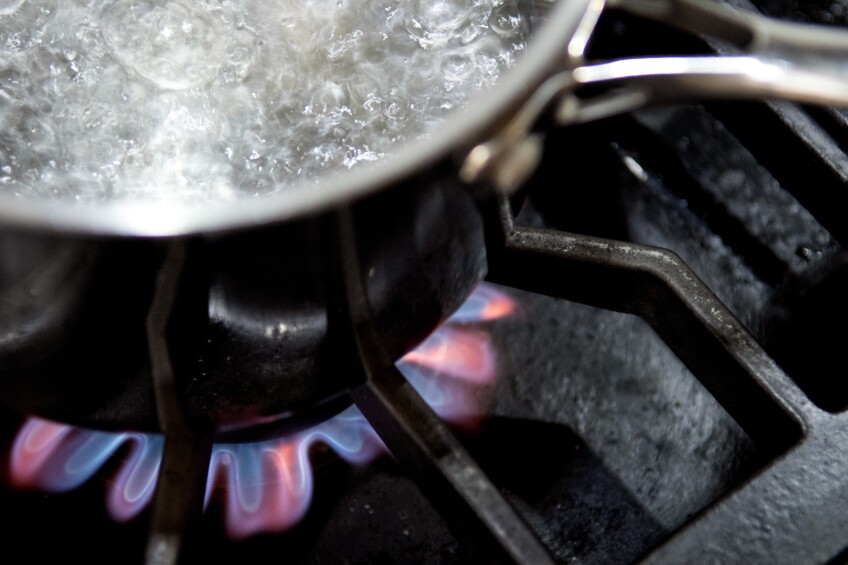How the 'Electrify Everything' Movement Went Mainstream

"Building electrification," once a subject embraced only by energy and climate nerds, is going mainstream.
In 2019, Berkeley, California passed the nation's first ordinance banning new buildings from hooking up to the natural gas system. That required homebuilders and developers to install electric heat pumps, electric dryers and, perhaps most controversially, electric stoves. The city council considered it a necessary step to cut carbon emissions, about a tenth of which here in the U.S. come from burning fossil fuels inside homes, offices and other sites.
Less than four years later, this approach has proliferated. If you're reading this in the United States, there's a good chance you live somewhere that has followed Berkeley's lead. A report published last Wednesday by the Building Decarbonization Coalition, a nonprofit dedicated to getting fossil fuels out of buildings, estimates that one in five Americans now reside in a place that encourages or requires landlords and developers to eschew gas.
"We've officially moved into the second phase of the movement," Panama Bartholomy, the organization's executive director, told Grist. "If the first phase was categorized as no awareness, no policies, no programs and a limited supply of product, I think we've officially moved into the second phase."
Public awareness about the benefits of electrification shot up in January, after a study found that one in eight cases of asthma can be attributed to gas stoves and the U.S. Consumer Product Safety Commission said it would investigate their health risks. Stories about the benefits of switching to modern electric cooktops, called induction stoves, proliferated.
But evidence suggests gas already was falling out of favor in the U.S., at least when it comes to keeping warm. Sales of electric heat pumps grew 15% last year, with shipments outpacing those of gas furnaces for the first time in at least 20 years, according to data collected by the Air Conditioning, Heating, and Refrigeration Institute. "That's massive," said Bartholomy. The Inflation Reduction Act, which contains billions of dollars in tax credits and rebates to help people swap gas heaters, dryers and stoves for electric appliances, is likely to accelerate the trend.
I want to set the record straight.
— Alex Hoehn-Saric (@HoehnSaricCPSC) January 11, 2023
Contrary to recent media reports, I am not looking to ban gas stoves and the @USCPSC has no proceeding to do so. Read my full statement: pic.twitter.com/bYS1GLEpXP
According to the coalition's report, 98 municipalities and four states — California, Washington, Maryland and Colorado — have adopted electrification policies. Some have enacted a ban on gas hookups in new buildings similar to Berkeley's. Others have set energy efficiency or emissions-based requirements that would be hard to meet without embracing electric appliances. Still others focus on achieving targets with rebates and other incentives, like Maine's goal of installing 100,000 electric heat pumps by 2025.
Some officials are even beginning to contend with the roughly 70 million existing homes that burn fossil fuels. Last year, California regulators adopted rules effectively banning the sale of natural gas heating systems statewide beginning in 2030, forcing homeowners to go electric when they eventually replace their furnaces. New York is considering doing the same.
Not everyone is pleased about the rise of electrification. The natural gas industry, facing an existential threat, has earned the sympathies of Republican lawmakers in at least 20 states that have passed laws preempting municipalities from restricting the use of gas. The American Gas Association, the largest trade group for gas companies, argues the industry can lower its carbon footprint by eventually delivering alternatives like renewable natural gas, which is methane derived from rotting waste and manure, and clean hydrogen.
Advocates of electrification argue going electric is a cheaper, more effective solution that can lower emissions today. Even though most of the country still generates its electricity by burning fossil fuels, in many cases switching from a gas furnace to a more efficient electric heat pump will reduce emissions. A recent analysis by the clean energy think tank RMI found that new, all-electric buildings are less expensive to operate and generate lower emissions than buildings that use gas in at least nine U.S. cities.
Now that electrification is in phase two, Bartholomy said there's pressure on the movement to get it right, and eventually reach stage three — much broader adoption.
The Building Decarbonization Coalition's report outlines three things needed to ensure electrification succeeds. Because going electric can incur high up-front costs, more funding must be directed to low income households to ensure the transition is equitable. Even climate-forward states still have policies and subsidies that favor gas, and should adopt reforms that align with their emissions targets. Lastly, the group argues for a nationwide phase-out of gas appliances, similar to the one California has adopted, to give the industry a clear timeline.
"This gives the market — everything from the manufacturers, to the distributors to the installers — clarity," said Bartholomy, "so that they can then start to make plans on how to change their business."
This article originally appeared in Grist.
Grist is a nonprofit, independent media organization dedicated to telling stories of climate solutions and a just future. Learn more at Grist.org.





